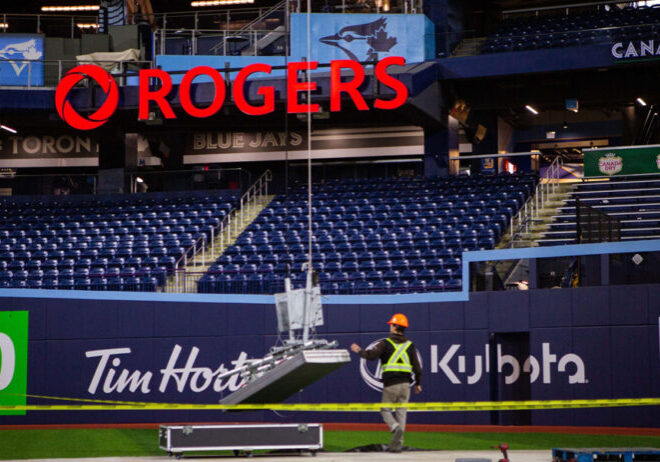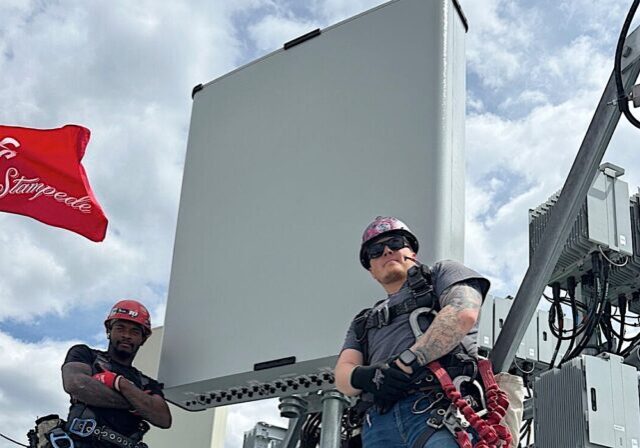News Feed from Mobile World Live (November 14, 2025)
“Galtronics, a Toronto-based designer and manufacturer of a range of antennas for the wireless industry, clocked 40 per cent growth in its infrastructure business in 2024, a year when wireless equipment capex in North America hit a six-year low.
This year the company set an even higher sales target and over the first three quarters is ahead of the plan, said CEO Leighton Carroll.

During a four-year strategic reset, the antenna maker upgraded its product line-up and moved into rapidly growing high-density indoor and outdoor environments, covering stadiums, arenas, convention centres and concert halls.
When looking at stadium deployments, he acknowledged there was really only one game in town, MatSing. Its lens-based antennas use giant globes, offer full dedicated beam stability and are deployed all over the world in many major stadiums.
“But they are extremely heavy and very expensive. It’s a fantastic product. It works very well but is large. Three people could fit inside the shell.”
Galtronics spotted an opening and developed its first comparative version, a panel-based, multibeam unit with full-beam stability, which weighed only half as much and was substantially lower in price compared with the legacy globe-like gear.
In fact, a major catalyst behind Galtronics’ growth over the past two years has been rising adoption of its multibeam antennas for large-scale events. The company now offers 36 models with more coming.
Proof in Germany
In September, Deutsche Telekom (DT) ran a live network trial using its gear at the Glücksgefühle Music Festival in Germany, with some 250,000 attendees consuming 40TB of data over four days, a traffic record for multibeam technology for an event.
The previous record using multibeam was 30TB, registered at Rogers Centre in Toronto during the Taylor Swift tour in Canada.
The test, the first using dual band, multibeam antennas in Germany, demonstrated the “superior performance in large-scale live events”, with DT covering both 4G and 5G frequencies with “multibeam outperforming the legacy 4G and massive MIMO 5G antennas”, a joint release with the operator declared.
The successful trial with DT and endorsement from a tier-1 European carrier is huge, Carroll said, since the operator is a “gold standard” for networks. He highlighted the trial and feedback “validate all the work that we put into making this technology right. You have to have something that works insanely well at a reasonable price point for that type of delivery.”
The company expects to replicate this success with other carriers across the continent and globe, he added.
The use-case
The CEO shared an example of a US third-party operator (3PO), upgrading an NBA arena, achieving capital savings of $750,000 on the project while also eliminating structural challenges that had arisen from the original plan to deploy much larger and heavier globe antennas.
The operator opted to switch to Galtronics’ multibeam antennas. The product engineer on the project told them after the launch: “You guys made me look like a hero due to excellent performance, enormous cost savings and eliminating structural issues for the arena owner.”
The company is working with many wireless carriers in North America and is also expanding into Europe. “You don’t break into Europe unless you have something that really works and something that is competitive” because there are so many alternatives, he noted.
Customers in Europe include Telecom Italia, and it is working with some of the Vodafone properties.
Carroll said a tower company has got “multibeam fever” and is upgrading a major US stadium using all multibeam, while some unnamed US operators have deployed the technology at a couple of college football venues.
In April, it was awarded a $132,000 contract to install its multibeams at Estadio Azteca stadium in Mexico, the largest in Latin America with a seating capacity of 87,523.
How it works
Its dual-band, multibeam antennas divide a sector into multiple independent directional sectors, or beams. They can cover different frequency ranges in the same antenna supported with additional radio capacity per beam. Using its technology, significantly more people can surf and stream at the same time with stable high-speed data rates, even when thousands of people are posting, chatting or live streaming concurrently.
He insisted its multibeam category has been “a game changer” for the company because customers say the products are amazing and will then ask what else does Galtronics offer. “We’re growing across multiple products categories.”
The company also has a broad small cell portfolio, working with all three tier-one carriers in the US and Canada. It is AT&T’s number one small cell provider, and works with Verizon, T-Mobile, Rogers and others.
Carroll said over the years it has encountered a couple of surprises: wireless carriers will take you to places you didn’t anticipate you’d go, and you’ll also identify opportunities from talking to your customers to develop new technologies.
He gave the example of cell sector saturation.
A cell tower typically has three or four sectors, with each pointing in a specific direction by design. One of those sectors in a high-traffic area can get saturated, meaning the amount of spectrum that’s been deployed can’t keep up with growth in data usage, he explained.
Carriers are starting to look at some sites and instead of just adding more antennas, they are decommissioning legacy products, including massive MIMO deployments, and replacing them with its multibeam units with additional radios to solve the cell sector saturation issue, he explained.
Carroll clarified massive MIMO is “a wonderful technology”, but it’s really a 5G technology and has limitations under significant load.
He added it is finding operators now are switching equipment on cell towers in this cell sector saturation scenario because the amount of dedicated spectrum and radio processing power behind it leads to a much better experience and saves them from having to spend more money on other alternatives. Given multibeam antennas can cover 4G and 5G in single antenna, it provides a simple upgrade path while allowing carriers to better manage their spectrum portfolio in a given location.
Galtronics, owned by Baylin Technologies, was founded in 1978 in Israel and moved its headquarters to Toronto in 2011.”
Video:






